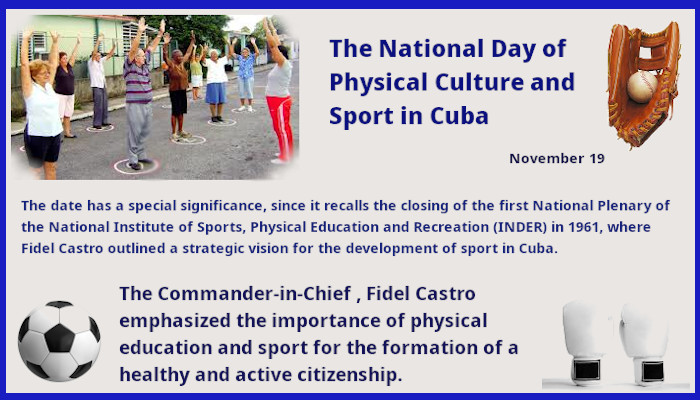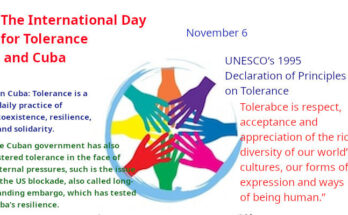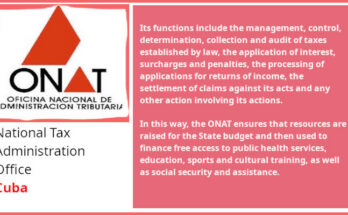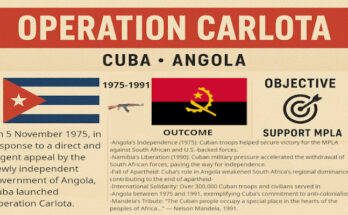Cuba has a profound, visible, and political connection with sports. Throughout the island, physical activity is integrated into everyday life, educational institutions, and community initiatives. From local games in Havana’s neighborhoods to the national training facilities that developed Olympic champions, sports in Cuba act as a tool for health enhancement, social unity, national pride, and global diplomacy.
Historical origins and governmental backing Sports in Cuba evolved from recreational activities and military exercises into a well-structured system following 1959. The revolutionary government prioritized physical education and mass sports by establishing sports schools, community clubs, and national institutes that orchestrated training and competition. This state assistance established extensive access: children participate in consistent physical education at school; local “polideportivos” (multi-sport facilities) provide coordinated activities; and gifted young athletes are identified and transitioned into specialized training.
The system focuses on both engagement and high standards. Mass programs emphasize physical literacy, collaboration, and well-being, whereas elite pathways direct talented athletes into sports academies and advanced institutions. This twofold strategy yielded extraordinary outcomes: considering its size, Cuba has accomplished impressive feats in boxing, baseball, athletics, judo, volleyball, and rowing on both regional and international stages. Well-known sports and strengths – Baseball: Frequently referred to as Cuba’s national pastime, baseball holds an almost sacred status. Street games and structured leagues familiarized generations with sports.
Cuban baseball merges quick, strategic gameplay with solid fundamentals. Cuba’s professional and amateur athletes have achieved significant success in international competitions and Major League Baseball following their emigration. – Boxing: Cuba’s boxing program exemplifies technical training and discipline. Mandatory training from a young age, exceptional coaching, and an emphasis on amateur contests resulted in numerous Olympic and world champions.
The Cuban style is characterized by footwork, defense, and tactical intelligence. – Athletics and field sports: Track and field athletes from Cuba have excelled in jumps, sprints, and throws. Strong state-sponsored training and specialized facilities enabled success at Pan American Games and Olympics. – Judo and wrestling: Martial arts enjoy strong institutional support. Cuban judokas and wrestlers are well-known for their conditioning and tactical savvy, regularly earning medals at top international competitions. – Volleyball and baseball-softball variants: Team sports receive strong grassroots attention, with women’s volleyball particularly successful at regional levels.
Physical culture and daily life Physical culture in Cuba extends beyond organized sport. Community exercise classes, dance (including Afro-Cuban traditions), and informal street play are common. Public spaces and sports facilities often host recreational programs that promote fitness and social interaction. The government promotes active living as part of public health: campaigns encourage walking, cycling, and participation in community sports, and schools integrate physical education into daily routines.
Institutions and talent development Cuba’s Instituto Nacional de Deportes, Educación Física y Recreación (INDER) coordinates much of the country’s sports policy, from youth development to elite competition. The system relies on a network of sports schools (Escuelas de Iniciación Deportiva Escolar and Escuela de Perfeccionamiento Atlético) that identify and train talented youngsters. Coaches are trained at national institutes, and scientific approaches to training, nutrition, and injury prevention are applied within the limits of available resources.
International presence and diplomacy Sport has been a central tool for Cuba’s cultural diplomacy. Athletes carry national identity abroad, and sporting success boosts international prestige. Cuban teams and athletes have strong showings at the Central American and Caribbean Games, the Pan American Games, and the Olympics. High-level performances and the migration of athletes to professional leagues have also created cultural and economic ties overseas.
Challenges and recent changes Despite successes, Cuba faces challenges. Limited funding, aging infrastructure, and restrictions on equipment and travel have constrained some programs. The defection of athletes seeking professional opportunities abroad has created gaps in certain sports. In recent years, policy changes have allowed some professionalization and paid contracts for athletes, shifting long-standing models of amateur sport and offering new career paths.
Opportunities for renewal Modernization initiatives emphasize facility upgrades, better coaching resources, and more flexible athlete contracts to retain talent. Strengthening sports medicine, nutrition, and scientific support can help Cuban athletes compete at the highest levels. At the community level, expanding recreational programs and improving access to safe public spaces will support physical culture and public health.
Conclusion Cuba’s sports and physical culture reflect a national commitment to collective health, social unity, and international visibility. With deep grassroots participation and a proven track record of elite achievement, the island’s sporting fabric is both a social good and a source of pride. Addressing funding and migration challenges while modernizing training systems offers a path to sustain and renew Cuba’s legacy of athletic excellence.




